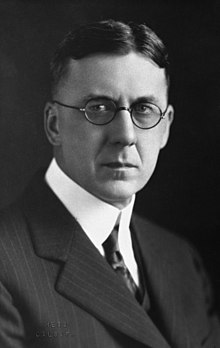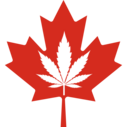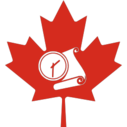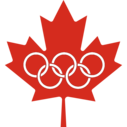
Back بوابة:كندا Arabic Portal:Kanada Azerbaijani پوْرتال:کانادا AZB Партал:Канада BE-X-OLD Портал:Канада Bulgarian دەروازە:کەنەدا CKB Portál:Kanada Czech Portal:Kanada German Portal:Kanada DIQ Portal:Canadá Spanish
| Showcase | Content | Contributing |
Introduction
Canada is a country in North America. Its ten provinces and three territories extend from the Atlantic Ocean to the Pacific Ocean and northward into the Arctic Ocean, making it the world's second-largest country by total area, with the world's longest coastline. Its border with the United States is the world's longest international land border. The country is characterized by a wide range of both meteorologic and geological regions. It is a sparsely inhabited country of 40 million people, the vast majority residing south of the 55th parallel in urban areas. Canada's capital is Ottawa and its three largest metropolitan areas are Toronto, Montreal, and Vancouver.
Canada is a parliamentary democracy and a constitutional monarchy in the Westminster tradition. The country's head of government is the prime minister, who holds office by virtue of their ability to command the confidence of the elected House of Commons and is "called upon" by the governor general, representing the monarch of Canada, the ceremonial head of state. The country is a Commonwealth realm and is officially bilingual (English and French) in the federal jurisdiction. It is very highly ranked in international measurements of government transparency, quality of life, economic competitiveness, innovation, education and gender equality. It is one of the world's most ethnically diverse and multicultural nations, the product of large-scale immigration. Canada's long and complex relationship with the United States has had a significant impact on its history, economy, and culture.
A developed country, Canada has a high nominal per capita income globally and its advanced economy ranks among the largest in the world, relying chiefly upon its abundant natural resources and well-developed international trade networks. Recognized as a middle power, Canada's strong support for multilateralism and internationalism has been closely related to its foreign relations policies of peacekeeping and aid for developing countries. Canada is part of multiple international organizations and forums. (Full article...)
Featured article -
Glacier National Park is part of a system of 43 parks and park reserves across Canada, and one of seven national parks in British Columbia. Established in 1886, the park encompasses 1,349 km2 (521 sq mi), and includes a portion of the Selkirk Mountains which are part of the larger grouping of mountains, the Columbia Mountains. It also contains the Rogers Pass National Historic Site. (Full article...)
Featured biography -

John Edward Brownlee, QC (August 27, 1883 – July 15, 1961) was the fifth premier of Alberta, serving from 1925 until 1934. Born in Port Ryerse, Ontario, he studied history and political science at the University of Toronto's Victoria College before moving west to Calgary to become a lawyer. His clients included the United Farmers of Alberta (UFA); through his connection with that lobby group, he was involved in founding the United Grain Growers (UGG). (Full article...)
Selected panorama -
Woody Point, Western Newfoundland. Panorama of the Gros Morne National Park with the Tablelands, overlooking Bonne Bay
Credit: Tango7174
National symbol -
Maple syrup is a syrup made from the sap of maple trees. In cold climates, these trees store starch in their trunks and roots before winter; the starch is then converted to sugar that rises in the sap in late winter and early spring. Maple trees are tapped by drilling holes into their trunks and collecting the sap, which is processed by heating to evaporate much of the water, leaving the concentrated syrup. (Full article...)
Selected vital article -

The prime minister of Canada (French: premier ministre du Canada) is the head of government of Canada. Not outlined in any constitutional document, the office exists only per long-established convention. Under the Westminster system, the prime minister governs with the confidence of a majority of the elected House of Commons; as such, the prime minister typically sits as a member of Parliament (MP) and leads the largest party or a coalition of parties. The prime minister is appointed by the monarch's representative, the governor general, and, as first minister, selects other ministers to form the Cabinet and chairs it. Constitutionally, executive authority is vested in the monarch (who is the head of state), but, in practice, the powers of the monarch and governor general are nearly always exercised on the advice of the Cabinet, which is collectively responsible to the House of Commons. Canadian prime ministers are appointed to the Privy Council and styled as the Right Honourable (French: Le très honorable), a privilege maintained for life. (Full article...)
Selected picture -
Current events
- May 21, 2024 –
- Canadian serial killer Robert Pickton is reported to be on life support after being physically attacked in a prison in Port-Cartier, Quebec. (Vancouver Sun)
- May 18, 2024 –
- Three people are killed and five others are injured in a boat collision on Bobs Lake in Ontario, Canada. (CBC News)
- May 17, 2024 –
- A child in Hamilton, Ontario, Canada, dies of measles, the province's first such death since 1989. (CBC News)
- The RCMP identifies the killer of four people in Calgary, Alberta, Canada, in 1976 and 1977 as American serial rapist Gary Allen Srery, who died in prison in 2011. (CFCN-TV)
- May 16, 2024 – Israel–Hamas war
- Global Affairs Canada announces sanctions on four "extremist" Israeli settlers in the West Bank for engaging in violence against Palestinian civilians and their property. (CBC News)
- May 15, 2024 – 2024 Canada wildfires
- Authorities evacuate over 6,000 people as wildfires approach the city of Fort McMurray, Alberta, Canada. (Reuters) (NPR)
Did you know -

- ... that before the House of Commons of Canada considers a taxation or spending bill, a royal recommendation has to be given by the governor general?
- ... that Chickaboom!, by country musician Tami Neilson, was nominated for both Canadian and New Zealand music awards?
- ... that when it was sold in 2002, a painting of the Ojibwe performer Maungwudaus was the second-most expensive artwork ever sold in Canada?
- ... that in 2019, the Canadian government's Translation Bureau began providing translation services in Dene, East Cree, Plains Cree, and Mohawk?
- ... that John Henry Dunn resigned from the Executive Council of Upper Canada only three weeks after his appointment, throwing away a post he had sought for 16 years, on a matter of political principle?
- ... that Theo Benedet is the first offensive lineman to be named the best Canadian university football lineman two years in a row?
- ... that Brian Fawcett, who would have turned 78 today, taught English to inmates before becoming a full-time writer?
Featured list -
The Supreme Court of Canada is the highest court of Canada. It was established by the Parliament of Canada through the Supreme and Exchequer Court Act of 1875. Since 1949, the Court has been the final court of appeal in the Canadian justice system. Originally composed of six justices (the Chief Justice of Canada and five puisne justices), the Court was expanded to seven justices by the creation of an additional puisne justice position in 1927, and then to nine justices by the creation of two more puisne justice positions in 1949. (Full article...)
Main articles
Associated Wikimedia
The following Wikimedia Foundation sister projects provide more on this subject:
-
Commons
Free media repository -
Wikibooks
Free textbooks and manuals -
Wikidata
Free knowledge base -
Wikinews
Free-content news -
Wikiquote
Collection of quotations -
Wikisource
Free-content library -
Wikiversity
Free learning tools -
Wikivoyage
Free travel guide -
Wiktionary
Dictionary and thesaurus
© MMXXIII Rich X Search. We shall prevail. All rights reserved. Rich X Search






























